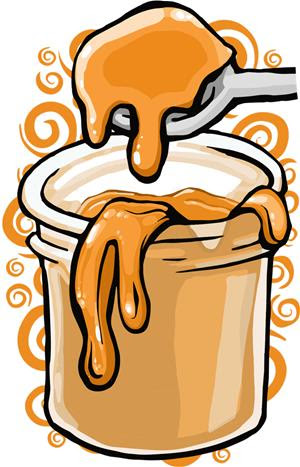On the surface, making caramel is simple enough: take sugar, heat it to boiling, add cream, let cool until creamy or chewy. But it’s tricky to make really well, which is why it’s hard to find great versions of the darkly sweet treat in stores. It comes in a variety of consistencies and flavors and every iteration requires a unique set of skills to make the caramel correctly. As Robin Béquet of Béquet Caramel puts it, “in the blink of an eye you can go from potential greatness to complete disaster.”
Milton Hershey started out as a frustrated caramel maker before switching to chocolate. He had three different caramel companies, all with varying levels of failure before throwing in the towel. If the grandfather of American chocolate couldn’t make it with caramel, what secrets have today’s confectioners like Robin and Joan Cuokos of Chocolat Moderne discovered that makes them so successful?
Trust the Process.
To make caramel, you need sugar, lots of cream, and lots of butter. In order to cut costs, large-scale producers often shirk the cream and butter in favor of cheaper oils and flavorings. The resulting caramels will last forever on candy counters, but the eating experience suffers.
“Creating a consistently soft caramel is hard,” Robin explains. “It requires high quality equipment, vigilance in verifying your thermometers are reading correctly, a well communicated high quality standard, a well-trained team that is committed to quality checks at multiple points during the cooking, cutting and wrapping process and lots of taste tests.”
“You’re basically in a chemistry lab,” says Joan. “Since caramels are based on sugar, with its crystalline structure and very specific properties, adherence to temperatures and timing is very important.”
Unlike Robin and her chewy treats, the caramels Joan and her team at Chocolat Moderne create are semi-liquid and spreadable. She was inspired to create caramels she could use in molded chocolates, her first love. “Our caramel has to be soft-enough to pipe into the chocolate mold cavities at a certain temperature.” Joan said. “We have to cook our caramels slowly at a lower temperature all the while monitoring the various liquid elements of each recipe to achieve the consistency we want.”
Follow your vision, not trends.
At Béquet Caramel, the crew never thinks they’ve got it all figured out. “Continuous improvement is a way of life here,” says Robin. “We’ve improved our recipe six times over the past sixteen years, improving flavor, mouth-feel, and shelf life, but never at the expense of taste and texture. Put simply, we want to make the best soft caramels anyone has ever tasted and that drives every decision we make.”
Joan has a slightly broader vision for her confections. “I look at caramel as a canvas or base for other flavors,” she says. “My Greek grandmother made all manner of spoon fruits that I loved and before I even launched Chocolat Moderne I was playing around with caramel and fruit flavors in my kitchen, trying to recreate those memories. I love balancing the tart, bitter, sweet and creamy elements to make a truly unique caramel.”

